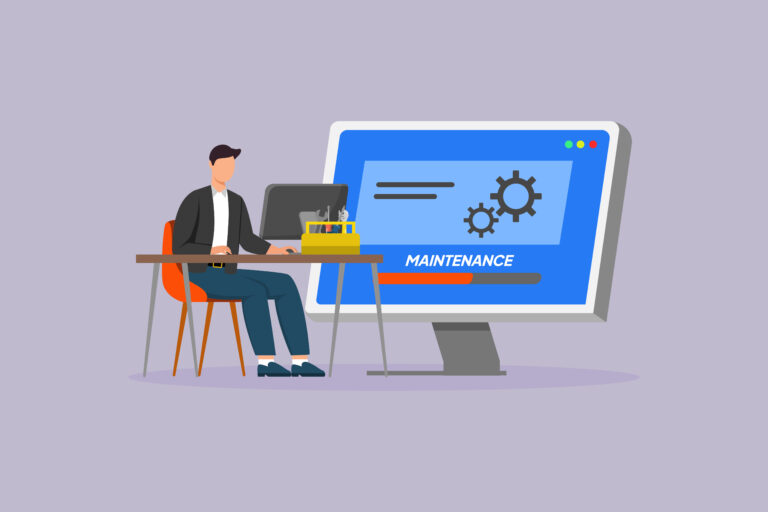Introduction
Every business today confronts an increasingly sophisticated cyber threat landscape. As attack surfaces expand—driven by cloud adoption, remote work, and digital transformation—IT leaders and cybersecurity professionals seek innovative defenses. At the center of this shift, two powerful forces emerge: cybersecurity fundamentals and artificial intelligence (AI). Yet questions remain: Which offers stronger protection? Does AI supersede traditional approaches, or vice versa?
Cybersecurity has long been the cornerstone of digital resilience, grounded in policies, governance, and tools like firewalls and endpoint protection. Meanwhile, AI offers speed and automation—processing trillions of data points in real-time to detect anomalies and adapt faster than any human-driven system. Yet AI alone can’t substitute for a solid cybersecurity foundation.
This article unpacks the question: “AI vs Cyber Security: Which Is Better?” We explore both disciplines, compare strengths and limitations, and highlight how integrating them creates a more powerful defense. Through expert insights, industry statistics, and real-world case studies, we’ll demonstrate why synergy—not choice—is the key to modern cyber resilience.
What is Cyber Security?
Cybersecurity encompasses strategies, processes, and technologies designed to protect digital assets from unauthorized access, disruptions, or data theft. It includes network defense, access controls, monitoring, incident response, and compliance—all underpinned by governance and human expertise.
- Firewalls to block unauthorized traffic
- Identity and access management (IAM)
- Encryption for sensitive data
- Security monitoring and logs
- Incident response planning
- Security audits and compliance checks
- Employee training programs
- Governance and policy frameworks
What is Artificial Intelligence (AI)?
AI refers to software systems that mimic human cognitive functions—such as learning, reasoning, and pattern recognition—by processing large datasets. In the cybersecurity management process, AI strengthens defenses through automation, real-time analytics, and predictive threat detection.
- Machine learning for anomaly detection
- Adaptive algorithms for new threats
- Automated workflows for alerts
- Natural language processing (NLP)
- Behavioral analysis of users
- Predictive threat scoring
- Integration with security systems
- Continuous learning and tuning
Cyber Security vs Artificial Intelligence
Cybersecurity provides the structural defenses—firewalls, policies, monitoring—while AI enhances those defenses with speed, scale, and intelligence. Comparing them isn’t about replacing one with the other; it’s about integrating AI into cybersecurity to amplify effectiveness.
- Cybersecurity = policies + tools + people
- AI = automation + learning + speed
- Cybersecurity defines “what to protect”
- AI accelerates “how threats are found”
- Together, they form layered protection
- AI reduces manual workload
- Cybersecurity ensures reliability and governance
- One amplifies the other
How AI Benefits Cybersecurity
AI adds intelligence to cybersecurity by identifying hidden patterns, automating responses, reducing false alarms, and enabling proactive threat hunting—ultimately boosting detection rates and shrinking incident response times.
- Real-time zero-day threat detection
- Behavioral anomaly identification
- Automated threat triage and remediation
- Malware blocking with predictive models
- Insider threat detection across users
- Threat intel correlation and forecasting
- Scalable 24/7 monitoring capabilities
- Analyst workload reduction
Staying Secure in a Changing AI Environment
Adopting AI introduces new risks—biases, adversarial attacks, and transparency issues—requiring robust governance, testing, and human oversight to ensure trust and maintain control.
- Validate AI models before deployment
- Maintain explainability of AI decisions
- Regularly audit training datasets
- Deploy human-in-the-loop review
- Monitor for adversarial exploits
- Define access controls for AI tools
- Align AI use with compliance standards
- Benchmark AI against real scenarios
How AI May Hurt Cybersecurity
AI can backfire if left unchecked—via biased outcomes, model poisoning, or giving attackers adaptive tools. Blind automation may overlook strategic threats or “black-box” errors that lack context.
- False positives from biased models
- Attacker-driven adversarial inputs
- Over-reliance reduces vigilance
- Stale models miss new threats
- Ethical and privacy breaches
- Hidden decision logic (black boxes)
- Automation misfires during incidents
- Regulatory uncertainties around AI
Best Practices for Optimizing Cybersecurity with AI
To leverage AI effectively, organizations must build robust pipelines that combine strong data, governance, and human oversight—prioritizing transparency, accountability, and continuous improvement.
- Use clean, balanced training data
- Maintain model explainability (XAI)
- Combine AI with rule-based checks
- Set guardrails for false alerts
- Continuously retrain with new data
- Embed human review cycles
- Log AI decisions for audits
- Align AI with cybersecurity frameworks
AI in Cybersecurity Examples
Leading cybersecurity vendors and organizations already deploy AI for ransomware detection, phishing prevention, cloud monitoring, and more—showing concrete return on security investment.
- Darktrace for network anomaly detection
- CrowdStrike Falcon for EDR and AI
- Microsoft Defender with AI Threat Intelligence
- Splunk with Machine Learning Toolkit
- Palo Alto Cortex XDR for cross-channel alerts
- Vectra AI for cloud networking protection
- IBM Watson for insider threat analytics
- Google Chronicle for timeline-based detection
Healthcare Cybersecurity
In the healthcare sector, cybersecurity threats carry life-and-death consequences. AI-based monitoring and response are now critical to protecting electronic health records, medical devices, and patient data from ransomware, phishing, and insider threats.
Managed Cyber Security Services
Many organizations now rely on Managed Cyber Security Services to implement AI-driven tools and monitor 24/7 across complex environments—combining technology with human expertise for a scalable defense.
Patch Management in Cyber Security
Patch Management in Cyber Security remains a vital process. AI helps automate and prioritize patching based on exploit likelihood and system impact—minimizing downtime while improving resilience.
Is AI the Future of Cybersecurity?
AI isn’t just a trend—it’s becoming critical as threats become more automated and sophisticated. However, its role is to enhance, not replace cybersecurity foundations, ensuring faster, smarter, and more resilient defenses.
- Automates repetitive security tasks
- Detects novel threats before they spread
- Enables data-driven risk decisions
- Scales to dynamic environments
- Supports remote and hybrid teams
- Lowers cost-per-incident
- Aligns with digital transformation
- Promotes continuous innovation
Pros and Cons of AI in Cybersecurity
AI brings speed, efficiency, and deeper insights—but also risks like complexity, misuse, and opacity that must be managed.
Pros:
- Scalability across environments
- Faster threat response
- Detection of unknown threats
- Reduced analyst workloads
Cons:
- Potential bias in decision-making
- Risk of adversarial attacks
- High initial investment
- Oversight complexity
How Hackers Exploit AI to Attack
Attackers are harnessing AI to craft more convincing phishing, adapt malware, and evade detection—elevating the cyber arms race.
- AI-generated phishing emails
- Polymorphic malware adapting on the fly
- Automated vulnerability scanning
- Deepfake audio for social engineering
- AI-driven exploit development
- Credential stuffing using AI bots
- Poisoning AI defense models
- Smarter DDoS launches
Is AI a Boon for Cybercriminals?
Yes. AI accelerates attackers—making sophisticated attacks accessible, scalable, and harder to trace. It already powers advanced threats, raising the stakes for organizations.
- Democratized hacking tools
- Faster malware creation
- Smarter social engineering
- Evading traditional defenses
- Higher obfuscation tactics
- Autonomous botnets
- AI-driven exploit kits
- Adaptable attack strategies
How AI Helps Hackers Hack Businesses
AI enables hackers to probe systems faster, craft targeted messages, and bypass defenses—all with minimal manpower and greater concealment.
- Target discovery via OSINT automation
- Personalized spear-phishing campaigns
- Malware mutation to evade AV
- Auto-generated malicious code
- Deepfake-based CEO impersonation
- Adaptive exploit techniques
- AI-powered brute-force at scale
- Automated lateral movement
Why Choose Infodot?
Infodot blends cybersecurity in business fundamentals with AI-powered detection and response. Our consultants help implement governable, ethical AI within resilient security frameworks, delivering 24/7 managed protection that evolves with your organization.
- AI-enhanced SOC for rapid detection
- Ethical AI governance programs
- Customized AI-cybersecurity synergy strategies
- Continuous vulnerability and threat intel
- Compliance-aligned AI workflows
- Human-supervised AI response escalation
- Transparent decision logs and models
- Scalable MSP solutions
AI-driven Managed Detection & Response (MDR)
Infodot’s AI-powered MDR combines expert analysts with continuous machine monitoring to identify threats faster and with greater accuracy.
- Real-time behavioral analytics
- Automated risk scoring
- Rapid containment workflows
- Adaptive threat intelligence
- Student-driven detection models
- SOC analyst augmentation
- Minimal false positives
- Transparent alert reporting
AI-Powered Vulnerability Prioritization
Our MSP uses AI to evaluate vulnerabilities based on exploit risk, business impact, and live threat data—focusing remediation where it counts.
- AI-based risk scoring
- Contextualized vulnerability alerts
- Scheduled patch automation
- Trend analysis for asset risks
- Dashboard-driven prioritization
- Integration with SIEM/ITSM
- Legacy system risk insights
- Remediation progress tracking
Real-World Examples
Real-World Example 1: Healthcare AI Detection
A major hospital faced daily phishing attempts and rare insider threats. Infodot implemented AI to monitor email metadata and user activity. One afternoon, AI flagged unusual access patterns to medical records—outside typical hours. The system quarantined the session and alerted the SOC.
An internal review revealed a compromised staff account, swiftly locked down before records were accessed. This likely avoided potential HIPAA fines and reputational damage.
Real-World Example 2: Finance Sector AI Defense
A mid-sized bank integrated AI-powered EDR and user analytics. During a transactional spike, AI detected a pattern of credential stuffing attempts launching from remote locations. The system automatically locked accounts, triggered MFA, and alerted Infodot’s SOC.
Within minutes, they stopped the attack, reset credentials, and ran forensic analysis—avoiding customer losses and regulatory alerts. The bank appreciated how AI accelerated detection and response without disrupting service—highlighting the synergy between technology and cyber frameworks.
Conclusion
In the question “AI vs Cyber Security: Which Is Better?”, the answer is clear: neither stands alone. Cybersecurity provides indispensable structure—governance, risk management, human judgment—while AI provides scale, speed, and adaptability. Together, they form a dynamic, resilient defense.
Ignoring AI means missing faster detection and smarter intelligence; ignoring cybersecurity foundations means exposing yourself to compliance failure, blindspots, and governance issues. Organizations that embrace both—and do so responsibly—gain a strategic advantage in the digital era.
For IT leaders, CISOs, and executives, the task now is integration—not isolation. Partnering with a managed IT services provider like Infodot ensures AI is deployed ethically, securely, and effectively—reinforcing cybersecurity frameworks while pushing the boundaries of defense automation. The future is clear: AI enhances cybersecurity, but only within a mature, principled security program. Make that synergy your priority.
FAQs
Will AI replace cyber security?
No—AI enhances, not replaces cybersecurity. Human oversight and governance remain essential for reliable, compliant security systems.
Is AI good or bad for cyber security?
It’s both. AI boosts detection and automation but also empowers attackers, so strong governance is necessary.
Which is better cybersecurity or AI?
Cybersecurity provides foundational controls; AI augments them. Both together create robust defense.
Which is the best AI for cybersecurity?
Leading options include Darktrace, CrowdStrike Falcon, SentinelOne, and IBM QRadar with machine learning modules.
Does cybersecurity require coding?
Basic scripting is beneficial for automation, integration, and incident playbook development—but not mandatory for all roles.
Can AI stop phishing attacks?
Yes—AI detects linguistic anomalies, domain spoofing, and behavioral deviations to prevent email-based threats.
What is adversarial AI?
An attack technique that manipulates AI models via malicious input to bypass defenses.
Is Explainable AI necessary for security?
Absolutely. XAI ensures model decisions are transparent and verifiable for audits and trust.
Can AI detect insider threats?
Yes—by monitoring deviations in user behavior and access patterns across systems.
What’s the cost of AI in cybersecurity?
It varies: tools can range from mid-five figures to enterprise-level six-figure investments annually.
Can attackers use AI?
Yes—they use AI for phishing campaigns, malware morphing, and adaptive network attacks.
Should SMBs use AI security?
Yes—AI makes enterprise-grade threat detection accessible and affordable for small to mid-sized businesses.
Are AI-driven firewalls effective?
Yes—they dynamically adapt policies based on network anomaly detection.
What are NLP use cases in security?
NLP drives phishing detection, log-level parsing, and conversational interfaces for SOC workflows.
Can AI manage compliance activities?
Yes—automates audit trails, policy mapping, and control monitoring for frameworks like ISO, HIPAA, GDPR.
How reliable is AI incident response?
With proper tuning and oversight, AI speeds containment and reduces human error.
What is model poisoning?
When attackers introduce malicious data during training to manipulate AI outputs.
Is AI SOC automation secure?
Yes—when AI integrates with human review and clear escalation paths.
How does AI affect SOC staff?
It augments SOC analysts by handling repetitive tasks and enabling higher-level threat hunting.
Can AI detect ransomware?
Yes—by recognizing encryption behavior, unusual file access, and network communications.
What’s behavioral analytics?
AI-driven monitoring of user behavior to flag anomalies indicating potential threats.
Is AI suitable for cloud security?
Yes—AI monitors cloud infrastructure, usage patterns, and configuration drift in real time.
How to prevent AI bias in security?
Use diverse datasets, continuous testing, and bias assessments to ensure fair detection models.
What is XAI?
Explainable AI—models that provide transparent, traceable decision-making relevant for audits.
Does AI require data labeling?
Yes—high-quality labeled data improves detection accuracy and reduces false positives.
Can AI detect zero-day threats?
Yes—by identifying unusual behavior, even without signatures.
What is SOC orchestration with AI?
Automated workflows with AI-driven incident triage, containment, and response coordination.
Can AI support mobile security?
Yes—monitors app behavior, location anomalies, and device configuration changes.
Is AI compliant with GDPR?
Yes—if designed with data protection principles and transparency in mind.
What are hybrid AI-cybersecurity teams?
Teams combining data scientists, security analysts, and architects to co-deploy AI-driven defenses.





